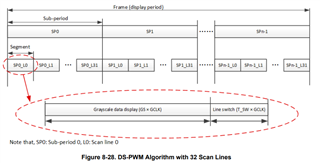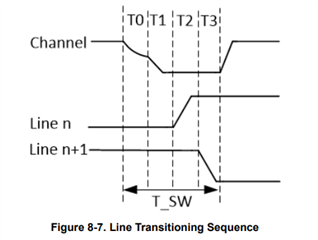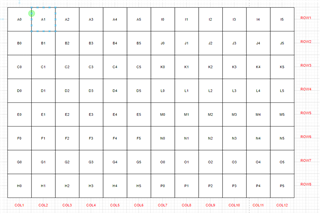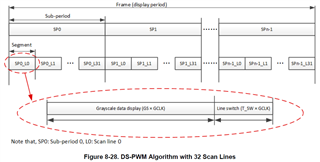Other Parts Discussed in Thread: LP5891, LP5890, LP5861
Hi everyone,
Based on the datasheet, LP5891-Q1 is using DS-PWM Algorithm where one frame will be divided into sub-periods and each sub-periods will be divided into 32 segments. The number of sub-periods can be set by FC0 register bit24-22 but how about the number of segments? Can it also be set, or it is fixed with 32 segments?
If the answer is that it can be set, what if in a few frames I set only one sub-period and one same segment, will I be able to turn on the scan line in that segment continuously without "OFF" time due to Line Transitioning Sequence?


Also, related to scan lines, when they are turned on, does the corresponding constant-current output always drive LEDs using PWM signal (hence the name DS-PWM)? Or can it be set to drive LEDs just using HIGH logic signal (like 100% duty cycle)?
Thank you in advance.
Regards,
Muhammad Adityo



